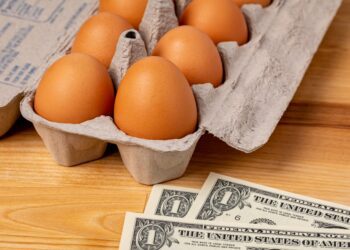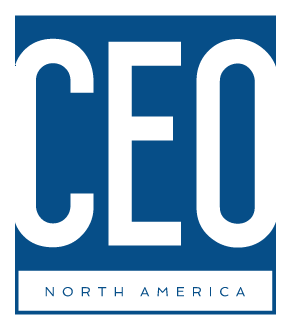A powerful aid to business decision-making
Nothing is as fundamental to human survival as food, but there is a problem. The global food system humans have created is one of the largest sources of greenhouse gas (GHG) emissions and biodiversity loss. At the same time, our food system perpetuates inequality, hunger, and the health crises of over and under-nutrition. That the global food system is under severe pressure is confirmed by increasing concerns regarding the state of the environment (e.g., deforestation, forest fires, species loss, soil erosion), economic costs of agricultural waste (e.g., food waste, fertilizer leakage), health risks (e.g., malnutrition and related noncommunicable diseases, antimicrobial resistance) and social costs (e.g., farmer poverty, underpaid workers, child and forced labour). A transformation in how we produce and consume food is an imperative to sustain a global population of 8 to 11 billion people. This transformation has already begun and will accelerate over the next decade.
The Scientific Group of the UN Food Systems Summit estimated the hidden natural (environmental degradation) and social (diseases related to diets such as obesity, hypertension, diabetes, heart disease) capital costs of the food system at 19.8 trillion USD, more than double the total financial value of food consumption. The True Value of Food (TVoF) is about applying the right incentives, actors across food value chains can then work to bring down the external costs and ensure that we create real value for business and society in a sustainable way.
The journey for companies to meet their bold ambitions, maintain a sustainable business, and be productive participants in the food system’s transition requires a series of decisions – many transformative – on sourcing, supply chain, production, product portfolio, innovation, marketing, and distribution. The TVoF is a means to reveal these hidden costs and benefits, and it is an invaluable tool for the corporations that have the most influence on our food systems to maximize their positive impact. This will be imperative in navigating the coming food systems transformation.
Many food players have started to act through different initiatives that address environmental, social economic, and health issues. The discussions and plans for action in each area have, over time, widened into multi-issue agendas for businesses. As a result, companies often have a wide portfolio of individual initiatives that are not easy to compare and coordinate.
TVoF provides a common language to identify hidden costs and benefits across all areas, and a basis for assessing the opportunities and risks of the emerging food transition. This holistic view of the full value of a product — not only for the consumer but for the planet and society — will help companies make the right tradeoffs to define the most effective path forward. In this paper we shed light on what TVoF is, why it is important to invest in TVoF now, which decisions TVoF can support for your company, and how to go about implementing TVoF in within your business.
—
True Cost, Price, or Value?
The True Cost of Food (TCoF) accounts for the production cost of food as well as all the hidden natural, human, and social costs of producing food. If desirable, policymakers can intervene in the market using taxes and incentives, adjusting the product price to reflect its True Cost. This concept is known as the True Price of Food (TPoF). The True Value of Food (TVoF) accounts for the net impact of food by also considering the value added – all the benefits – to consumers, society and the environment in addition to the TCoF. For instance, nutrition components with a proven health benefit could have a higher value. Some assume that TVoF will result in consumers being penalized with higher food prices (linking back to TPoF); but the final price of a food item results from a wide range of policy and financial decisions. TVoF can be a powerful tool that helps businesses, policy makers, and other actors efficiently make decisions that make higher value, healthier, sustainable food accessible to all.
The concept of TVoF is not just relevant to policy decisions and food and agri-businesses. Capital markets have a significant interest in understanding the value creation potential and risk profiles of businesses. There is consequently potential to integrate the TVoF into food and agri-business reporting and investor communication, leveraging the influence of capital markets for promoting sustainable food businesses and systems.
—
What is The True Value of Food?
True Value of Food (TVoF) analyses incorporates the direct and indirect positive and negative impacts associated with a product from farm to fork.
These impacts are generally viewed in four categories: Natural, Human, Social and Economic (with the last two sometimes combined). The true value of a product is not only defined by its composition but also by where and how its ingredients are produced and the ecosystems the product relies on — how they were grown, transported, and processed, as well as its availability, accessibility and the characteristics of the final consumer of the product, the way the products are consumed, and the outcomes from the consumption.
Illustrative example
Defining the full TVoF on a product level can be complicated as the maturity of calculation methodologies varies across the externalities. However, using simple analyses for selected drivers already shows the impact of TVoF and can inform decision making.
The next example provides a starting point for one product: a 70-gram chocolate-chip cookie, which in the example is consumed by a British consumer
The retail price of the cookie is ~USD $0.55. The price represents a combination of the “value” that the customer has placed on the product and is willing to pay for it and the brands pricing strategy. This value that is captured is likely a combination not only of the caloric value, but of the joy the cookie brings to the customer. But this value does not account for many hidden costs. For instance, we calculated six externalities: GHG emissions, water scarcity, food waste, health impacts from empty calories,4 air pollution, and social costs. The environmental externalities are borne by all of us, the health costs by the individual and the broader British society that pays for the collective healthcare costs, and the social costs by the cacao farmworkers who may not be earning a living wage. This simple calculation adds USD $0.56 of hidden costs to the current cost of production, USD $0.33. A more holistic assessment of value is needed. These hidden costs should not necessarily be borne by the consumer in higher prices. What they instead provide is an opportunity for companies to understand their portfolio with a holistic social, economic, and health value lens to support portfolio decisions. Companies can then choose to mitigate some of the negative impacts of a product, or even move towards a portfolio consisting of inherently more sustainable and healthy products. For instance, at the same value in the market (USD $0.55) a business could produce the ingredients of a more locally sourced, nutritious, oatmilk porridge. The bowl of oats has cost of goods sold of USD $0.36 and carries hidden costs of only USD $0.19. Of course, a bowl of porridge is intuitively healthier, but hidden costs are also reduced by lower GHG emissions of certain ingredients, local sourcing of inputs, and the better support to farmers in these value chains than for cacao in Africa. Ultimately, this is a starting point illustration that only begins to get at some hidden costs, not fully to value. But we wish to demonstrate that even simple calculations can help a company start to understand their portfolio with a new lens.
—
Examples of externalities
1. Natural: natural capital costs related to GHG emissions, land use, water, biodiversity
2. Human: malnutrition, diet-related noncommunicable diseases such as cardiovascular disease, diabetes
3. Social-Economic: working conditions, forced or child labor, fair pay, food loss and waste, fertilizer leakage
—
Leaders must act now
The food transition is underway. Although the pace and intensity will vary across value chains and geographies, every CEO is experiencing direct or indirect pressure leading to changes in current and new, emerging profit pools.
For instance, in response to the growing consumer segment demanding sustainably produced food, food and beverage companies now have stricter sustainability requirements for their suppliers. Governments globally are rapidly implementing regulations, mostly on environmental and health externalities such as taxes on CO2 emissions and sugar. The competitive landscape is also being changed by investors in new or improved food solutions as the Food Tech industry booms. Negative stories about products and companies that are harming people and the planet are quickly amplified, creating reputational risks for companies. Boycotts, which have long been a means for consumers and food activists to call out high-profile brands, are becoming more common.
Your company is likely on the move already, and like most others, probably has bold goals and exciting initiatives underway to respond to food system sustainability pressures. With so many dimensions to work across – economic, social, environmental and health – it is challenging for companies to make tradeoffs.
TVoF is a powerful way to create an integrated view of the sustainability agenda. A common language can help CFOs to make decisions on investments in health, environmental and social issues. It can provide leaders of R&D with an accessible framework to evaluate future portfolio moves. It can support procurement and supply chain teams to understand the impact of different sources of supply on the overall food system. And, it can serve as a simplified engagement model with the board of directors. TVoF can create a common internal currency to tackle a complex set of priorities.
But where to start? We acknowledge that the best outcome will be a globally aligned and recognized framework. However, until a universal standard is developed, there are ways for companies to get going.
—-
Case studies of companies leveraging TVoF in their businesses in different ways
Product portfolio and Innovation Royal DSM, a Dutch science-driven company specializing in nutrition health and sustainable living, collaborated with the consultancy, True Price, to do a study on DSM’s product, OatWell® The study quantified the true value of the product by assessing its impact on the environment, society and health across the value chain.
OatWell® is an oat bran powder high in oat beta-glucan. Produced by milling whole oat kernels, OatWell® contains a natural combination of oat beta-glucan and insoluble fibers as well as large quantities of protein, unsaturated fatty acids plus vitamins and minerals.
The outcome of the study showed that:
1. The environmental and social benefits are greater than the environmental costs associated with OatWell®’s value chain, especially as a substitute for wheat.
2. As people eat considerably less when OatWell® is a part of a healthy diet, environmental costs are reduced further owing to the decrease in overall food consumption and production.
3. The oat beta-glucan found in OatWell® reduces the risk of cardiovascular diseases by 20%.
These insights were used for the product value propositions, as well as internal encouragement to quantify environmental, social and health impacts for other products/activities. Furthermore, it further steered the direction of the innovation portfolio towards increased positive societal impact.
Transparency across business
Olam, a food and agri-business supplier of food ingredients, feeds and fibres, developed the Integrated Impact Statement (IIS) as a decision-making tool at profit-center level that provides business units and finance teams with a holistic monetary perspective of the True Value of the product in easy to understand formats similar to Profit & Loss and Balance Sheet. Olam uses this to understand related risks / opportunities and it drives decision making to keep operations and impact within their intended environmental boundaries.
Using data from the IIS Olam was able to quantify and demonstrate the progress on natural capital. The IIS results showed reduction of natural capital costs associated with the processing and growing of a metric ton of cocoa beans by 20% and 5% respectively from year 2018 to 2019. These reductions were achieved by investing in clean energy across their processing facilities (i.e., switching from fossil fuel generated electricity to green electricity, boilers fueled by cocoa shells) and assisting farmers to apply Good Agricultural Practices (e.g., pruning, planting shade trees, using fertilizer efficiently, and composting crop residues).
The transparency related to natural capital externality costs assists in decisions related to relocating investments and activities to lower societal and environmental impact.
Partnerships to get started, learn and accelerate impact
Danone has three divisions: Essential Dairy and PlantBased Products, Waters and Specialized Nutrition. Today, Danone is advancing in its journey to reach net zero emissions on its full value chain by 2050, peaking its full-scope emissions in 2019. This progress comes from over a decade of actions and collaboration with key partners. To initiate their action against climate change, in 2008 Danone partnered with the Ramsar Convention on Wetlands and the International Union for Conservation of Nature (IUCN) to form the Danone Fund for Nature (DFN). The first pilot project intended to offer Danone solutions to compensate for carbon emissions through the preservation and restoration of wetlands. DFN funded the Senegalese NGO Océanium to plant mangroves to restore shrinking forests. The success of this pilot (the world’s largest mangrove restoration project to date) prompted Danone to open the fund to new investors. Thus, DFN evolved into the Livelihoods Carbon Fund in 2011, with nine other investor companies including Schneider Electric, Crédit Agricole, Michelin and Hermès. In June 2021, Danone joined 13 other companies and financial investors to launch a 3rd Livelihoods Carbon Fund (LCF3), totaling 150 million euros, which aims to improve the lives of 2 million people and deliver up to 30 million carbon offsets. Livelihoods is part of Danone’s strategy to activate nature-based solutions on a large scale, driving systemic change in and beyond its value chain.
(Courtesy BCG)












